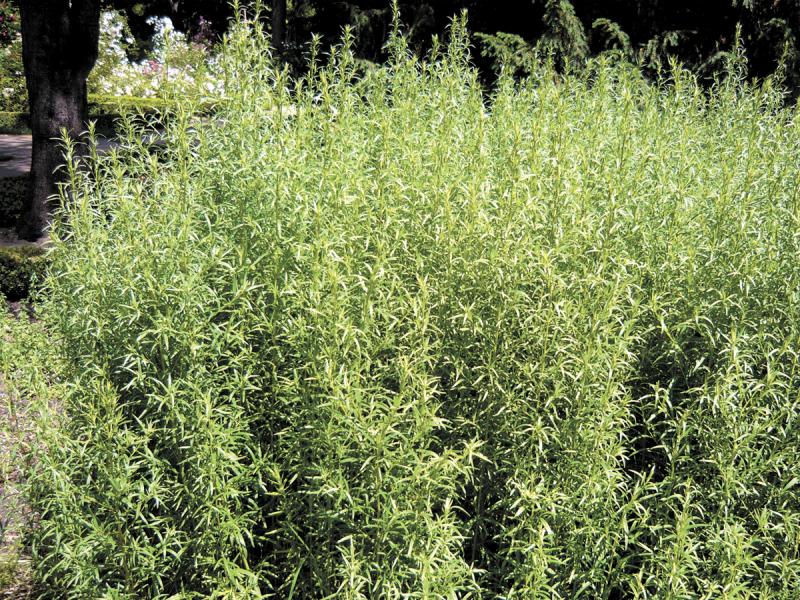The eighth-largest constellation, Draco, is called the dragon constellation because it snakes its way across the northern sky. One of its stars, Thuban (Alpha Draconis), was the pole or north star back when the Egyptians were building the pyramids.
There is a gentler dragon right in the garden, the Artemisia dracunculus Sativa, or French tarragon, an herb with such a sharp taste that the Arabs named it "turkhum," meaning dragon, which became "estragon" in French, and eventually our French tarragon. It is sometimes listed as Dragon Sagewort.
Tarragon is the key ingredient in Bearnaise sauce and Dijon mustard, and it pairs well with eggs, meat, poultry and seafood. The thin, grass-like leaves of French tarragon have a strong scent, much like sweet anise or licorice. French tarragon grows in a mound about 18 to 36 inches high, spreading 12 to 15 inches across.
If planted in the garden, space the plants a good two feet apart to allow air to circulate.
Whether potted or grown directly in the garden, French tarragon grows best in dry, well-drained soil with a neutral pH of 6.5 to 7.5. Tarragon grows best in full sun, though partial shade is fine too. Before you plant your French tarragon, add a bit of compost, which feeds the plant, and more importantly, helps keep the soil light and well drained. French tarragon is a good companion plant for eggplant as well as most other vegetables.
Beware the Russians! There is an imposter among the herbs, so beware of the less-desirable Russian tarragon, grown from seed, whereas true French tarragon (Artemisia dracunculus Sativa) can only be grown from cuttings or root divisions. Do not overwater your French tarragon, and make sure the soil drains rapidly, or your plants could rot. Once a week is water enough. Like most herbs, French tarragon actually has more intense flavor when grown in poor soil. French tarragon is hardy in USDA zones 4-8, though colder areas will benefit from a winter mulch.
If the plants become too crowded, divide them in the spring, taking special care so you don't break the fragile roots. You can also take stem cuttings and root them.
Keep your plants well picked to encourage more growth. The leaves are best fresh, but you can dry them, or better yet, freeze them for later use. A single potted plant or two should give you all the herb you can use.
Though chiefly used in the kitchen, French tarragon is used in herbal medicine to stimulate the appetite, relieve colic and flatulence, and even treat rheumatism. French tarragon is made into soaps, perfumes and cosmetics, and is combined with Chamomile in a tea to put you to sleep.
Pot up some tarragon and you will have the makings of sauce Bearnaise, eggs Benedict and flavorful vinaigrette. As for tarragon being related to people-eating dragons, the famous American chef James Beard quipped, "I believe that if ever I had to practice cannibalism, I might manage if there were enough tarragon around."















































